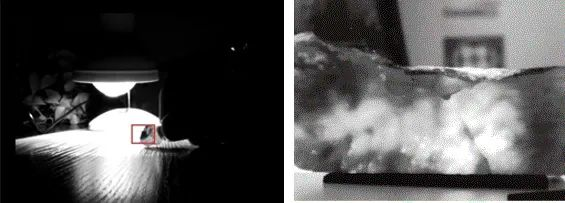 tel
tel
tel
tel
 tel
tel
tel
tel

2023-04-06 15:58:06
Solar photovoltaic cells (solar cells, photovoltaic cells) are devices that convert solar energy into electrical energy. Currently, silicon based photovoltaic cells are widely used in photovoltaic systems. The detection, identification, and control of product quality issues during the production of silicon based photovoltaic cells greatly affect the performance of the finished product.
Due to its high sensitivity, high resolution, and high recognition in the working response and detection bands, short-wave infrared cameras are very suitable for production testing of solar photovoltaic cells. They can quickly and accurately detect defects in silicon materials and panels, thereby optimizing the quality control and production process of solar cells, and improving product quality and performance.
Using a short wave infrared camera to detect the quality of solar silicon ingots can avoid the occurrence of the above conditions in advance, and is a very valuable machine vision application. The principle is to select silicon ingots with higher purity by imaging them through shortwave infrared based on the different absorption rates of carbon element content or other impurities in the silicon ingot to the light in the shortwave infrared band, so as to improve the product quality. The imaging effect of silicon ingots under a shortwave infrared camera is shown in Figure 1:

Figure 1 Photos of short wave infrared camera imaging silicon ingots
In this way, using a shortwave camera to detect impurities and holes in silicon ingots, and through various process pre-treatments, the quality of silicon ingots can be improved, thereby improving the quality of the final silicon wafer product.
For solar panels produced, short-wave infrared cameras can also be used for detection, the principle of which is to achieve electroluminescence (EL) imaging.
The electroluminescence of solar cells is achieved by applying a forward bias voltage to the solar cells to excite photons. When electrons are injected into a solar cell, they combine with existing holes and release the energy generated in the form of photons, thereby stimulating light in the short wave infrared band. The main reason for using a short wave infrared camera to detect solar panels is that electroluminescence imaging can provide important information features, such as cracks, broken grids, sintering, electrical leakage, and other issues (where there are defects, the image displayed is generally dark), so as to analyze sample defects.
Conventional solar cells inevitably have some defects, which are often important factors limiting their photoelectric conversion rate and lifetime.

Figure 4 Image of Shortwave Infrared Camera Imaging (Defect/Defect) Battery Board
In addition to defect detection, short-wave infrared cameras can also be used to detect the photoelectric conversion efficiency of photovoltaic solar panels.
Sales Manager: Lily Liu
Mobile: 086-13359283296
Email: info@gatherstarhk.com
Xi'an Gatherstar Optoelectronic System Co.,Ltd is specialized in infrared and laser photoelectric system products and module, components and elements. we are not only confident in supplying qualified optoelectronic products to all of our customers, but also concentrating on offering continuous innovations and reliable service.
